Ideal Step Drill Bit, 1/4 in. – 1 3/8 in.
$100.56
Detect co readings directly from your smartphone with the selection of this Ideal Step Drill Bit.
In stock
Description
IDEAL step drill bits for precise, repetitive drilling through the toughest materials including brass, carbon steel, cast iron, stainless steel, and more. These tough and reliable tools are constructed with a rugged titanium nitride exterior coating for protection, edge retention and corrosion resistance. Each step is gradually blended to ease stepping through hole sizes; reducing the need to keep changing drill bits. Split point design eliminates the need for a starter hole or punch and delivers three times faster starts, saving valuable time. The double-fluted design provides balanced cuts, more cutting surface compared to a single flute design, and cooler operation.
- Titanium nitride coating dramatically extends bit life
- Drills 10 different holes sizes 1/4 in. to 1 3/8 in., Step Increments 1/32 in., Step Thickness 1/16 in. – 1/4 in.
- Split-point design for faster starts
- Unique double-fluted design for balanced cuts and cooler operation
- Shank 1 in. length
- Max operating speed 1500 RPM
- Do not use on hammer drills
Additional information
| Weight | 6.25 lbs |
|---|---|
| Dimensions | 2.75 × 1.40 × 1.40 in |
| Assembled Depth (in.) | 1.75 in |
| Assembled Height (in.) | 1.38 in |
| Assembled Width (in.) | 1.38 in |
| Bit Diameter | 1-3/8 in |
| Bit Length (in.) | 2.75 |
| Bit Material | Titanium |
| Drill Bit Type | Step |
| Drill Bit Type(s) Included | Step |
| Individual/Set | Individual |
| Material Application | Aluminum, Cast Iron, Duct/Sheet Metal, Stainless Steel, Steel |
| Model | 35-517 |
| Self-Feeding | Yes |
| Shank Diameter | 3/8 in |
| Shank Style | 3-Flat |
Reviews (10)
10 reviews for Ideal Step Drill Bit, 1/4 in. – 1 3/8 in.
Only logged in customers who have purchased this product may leave a review.
Related products
Drill Bits
Model# 49-56-0247Drill Bits
Model# 48-25-2122Drill Bits
Model# 48-20-8856Drill Bits
Model# DW2542Drill Bits
Model# 48-32-2100Drill Bits
Model# DW2535Drill Bits
Model# 48-20-8852Drill Bits
Milwaukee 18 in. x 7/16 in. Bit Extension Bit Extention For Selfeed Bits and Hole Saws
Model# 48-28-4011


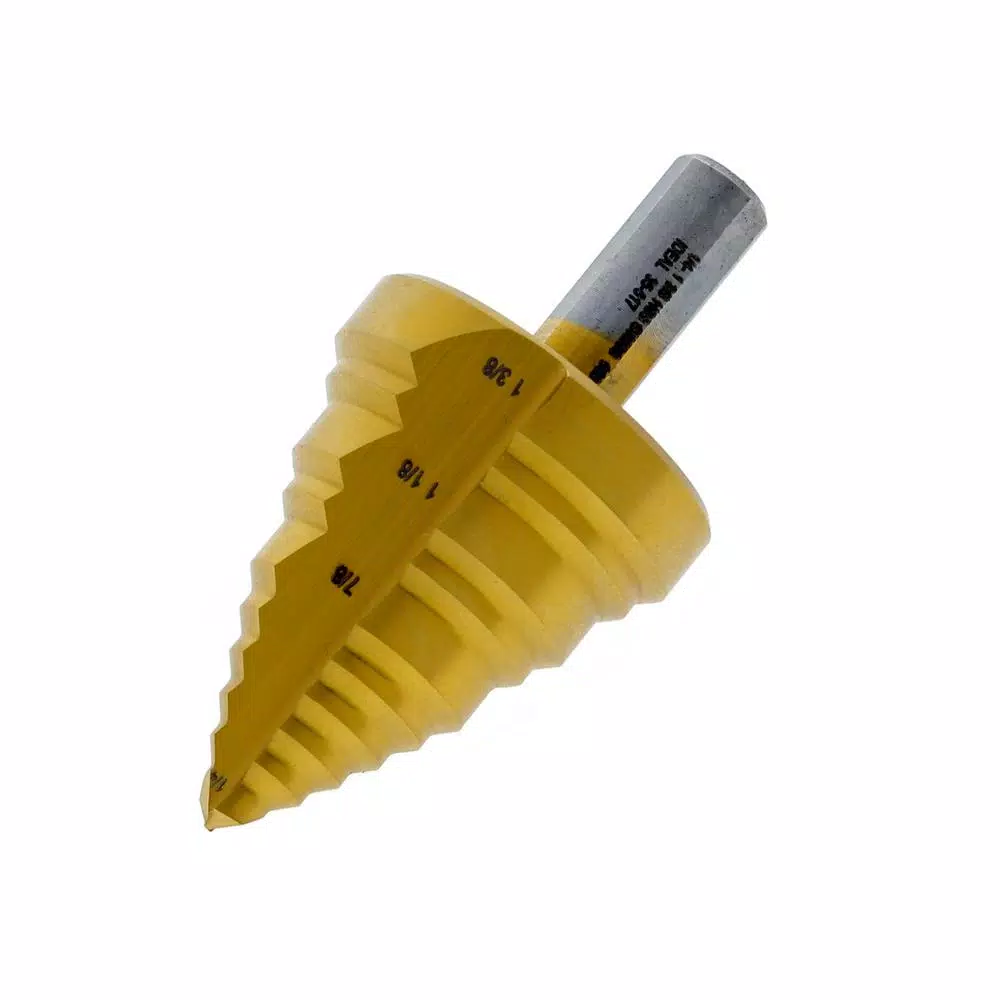
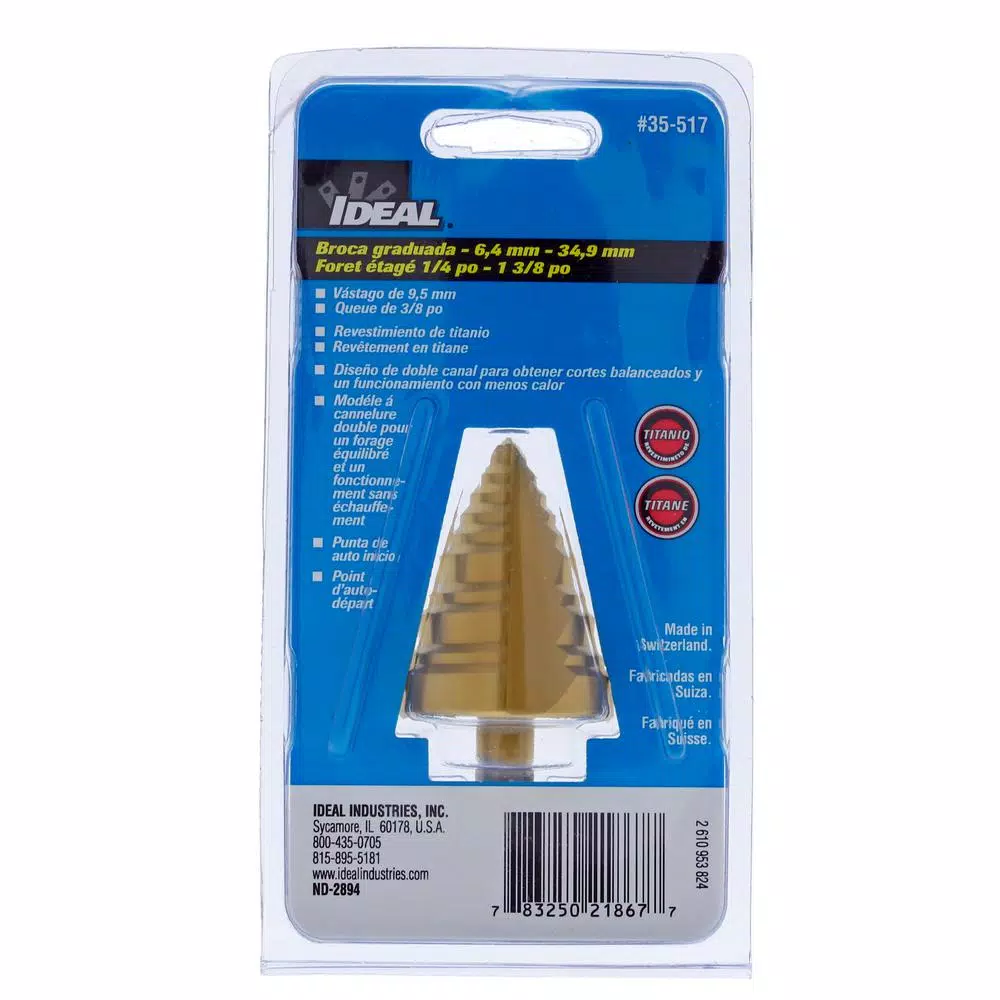
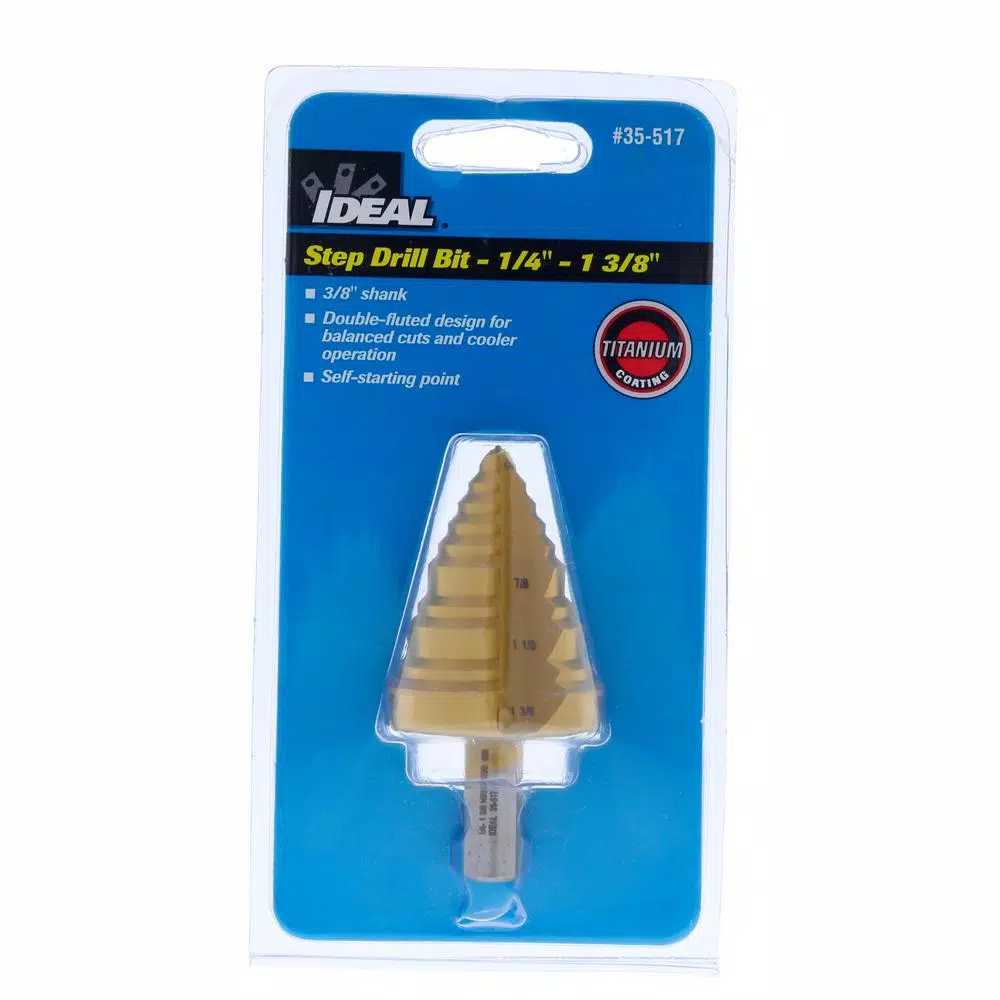
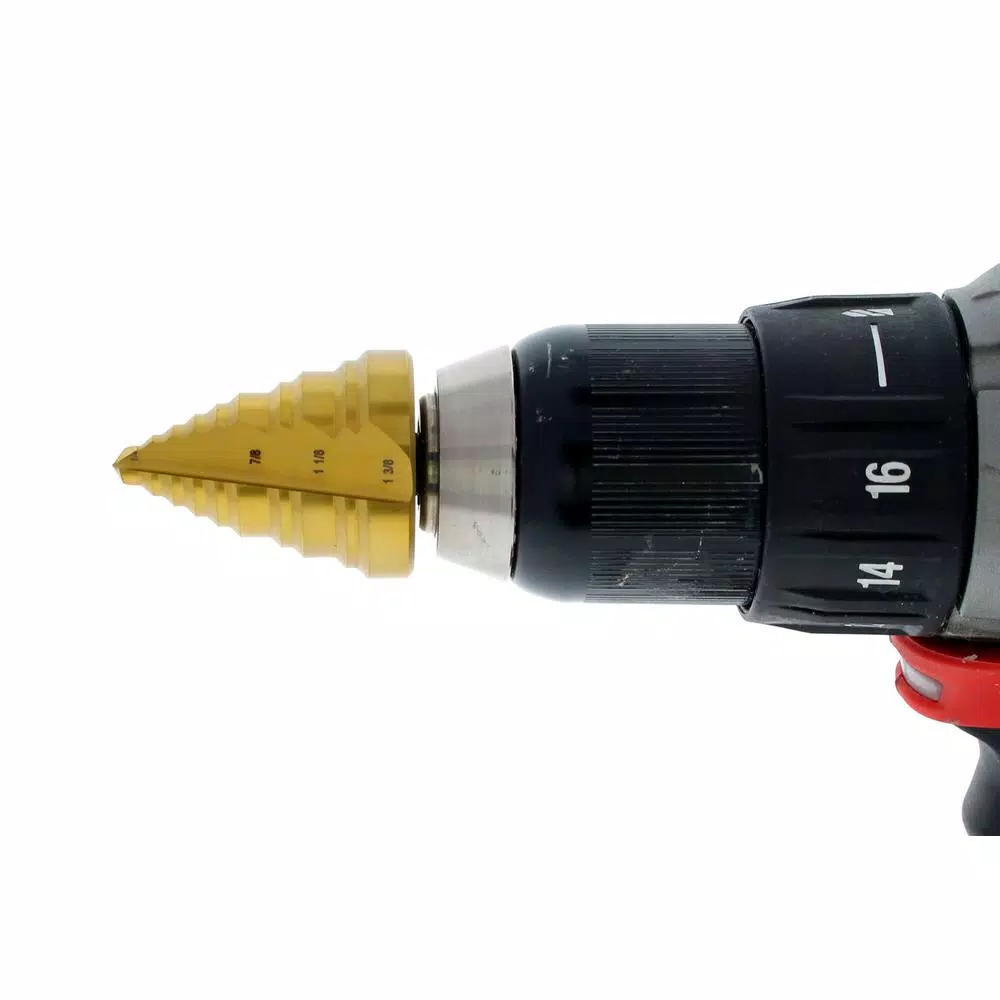

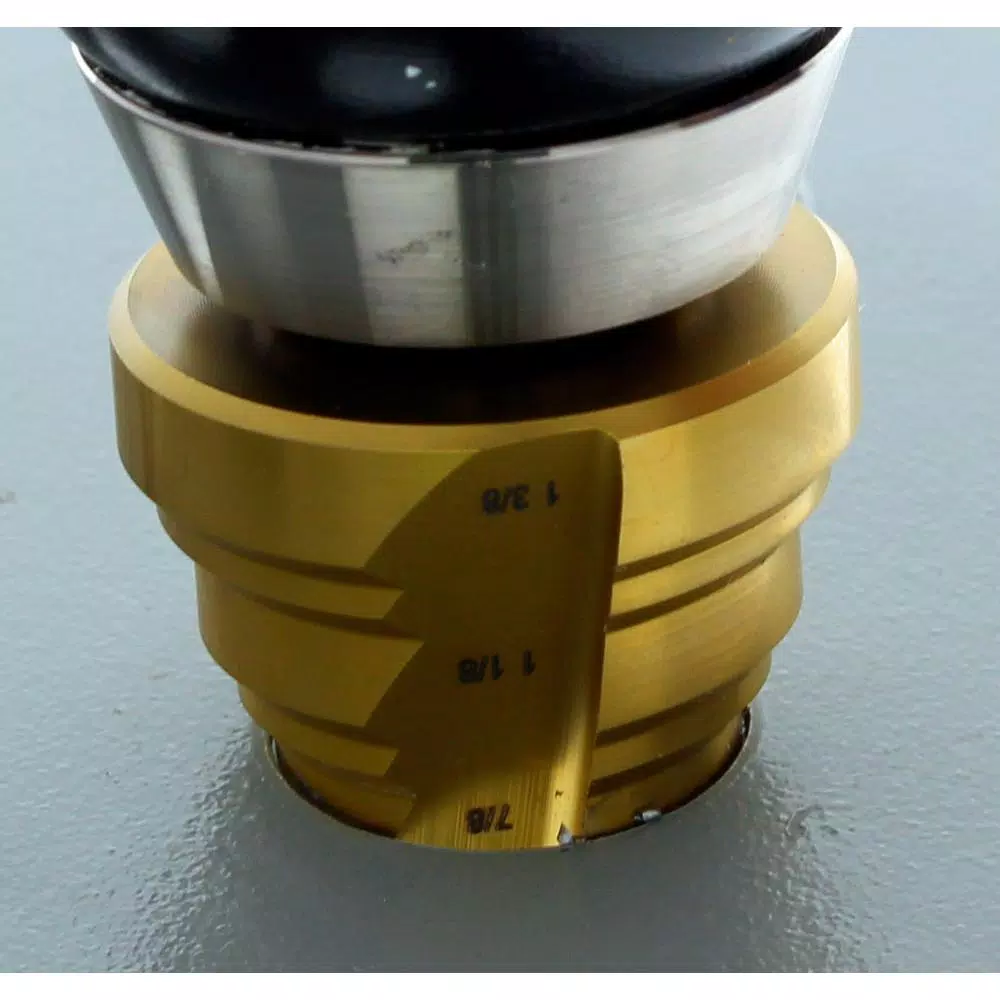






















Brielle Ward (verified owner) –
Good step bit. I had forgotten how much easier a good sharp one cuts, and how much cleaner the hole. Much better than the throwaway “Titanium” junk I have been buying from the local discount tool house. This thing cuts in no time, with minimal pressure, and does it well and repeatedly. I have used it at work for both steel and aluminum sheet up to 0.093″ thick, using just 3-in-1 oil or soapy water as a lube/coolant. And in both a drill press and a cordless drill. So far so good. Only time will tell about durability.
Lisandro Hansen (verified owner) –
Drills quick and mostly clean every time, enlarging holes and making work easier. The fluted design works well, but make sure to use cutting oil or 3-in-1 oil to lubricate the bit for easier drilling; it’s not necessary, but will help prevent kickback from binding.The bit made quick work when I replaced the ignitor on my grill. I needed a slightly larger hole, so a standard hole saw would work since I couldn’t center it. Enter the step drill, and it could not have been easier. Electricians will love this tool to enlarge openings on handy boxes—the depth of each step is perfect for electrical boxes.
Simone Veum (verified owner) –
This bit works easily and accurately. It has a 1/4 inch shaft that easily chucked into the 1/2 inch chuck on my drill press. I used it to drill some relatively thin sheet metal (approximately 1mm). It went through the metal very quickly without even using some lubricant and didn’t get too hot. The only drawback I see with this is that the steps are only labeled for 1/4″, 7/8″ and 1 1/8″–a bit random, but you can mark off the step you need with a dry erase marker or some masking tape if it’s not at one of the more clearly marked steps.
Asa O’Connell (verified owner) –
Works great, nice and sharp. Waste material is removed quickly and cleanly. For me this works best on very thin materials as the “steps” are not more then 1/8 of an inch or so. Where I use this the most is on electrical boxes that need holes for various connections that vary in size. By using a bit like this I don’t need to keep changing for the different sizes and this leaves a much cleaner cut then the hole saws or paddle bits. It is also easy to get started and the tip did not wonder for me.
Tom Oberbrunner (verified owner) –
Another great IDEAL tool, doing electrical work and working on cars/ street rods for many many years it seems that you are always needing to drill a hole in metal and quite often there was very little room around where you needed the hole to use a drill and a hole saw, and then there is the problem of no matter how much effort you put into trying to stop the hole saw just after it drills through the metal, it seems to always catch me by surprise. I have owned about every type of tool made for putting a hole in metal ( knock outs both, manual and hydraulic, all drifferent brands of hole saws and etc, and they all had there good points and there not so good points, but even though I have seen this type of step drill before, I never owned one until now. I just used it to drill a 3/4″ hole in 14 guage metal and it did a great job. It probably took a 1/4th of the time it would have taken me to get my hole saws out, and select the right mandrill and then put it all together and then when the hole was cut, I then would have to take it apart and put it back in the case. I am not saying that this step drill is the right tool for every situation, but probably 1/2 the holes I drill. My suggestion would be to buy one you will be glad you did!
Regan Gerlach (verified owner) –
This step-drill bit is like having a drill index that I can carry in my tool pouch! This is my “go-to” tool for enlarging electrical box knockouts and/or the power connection openings on lighting fixtures. It’s also great for drilling or increasing the diameter of existing holes in fiberglass, poly-plastic or thin stainless steel. The uni-bit cuts clean, leaves a smooth edge and can be used to chamfer or deburr holes by going up to the next diameter momentarily. Just keep the drill motor rpm and pressure down when drilling metal sheet stock and use a little cutting lube to prevent grabbing. Oh, and don’t forget to wear eye protection.
Noemy Collins (verified owner) –
I make electrical flashers and running light control units using “kit” boxes made of aluminum or hard plastic. This drill makes clean openings for electrical wiring, especially when I use rubber wiring grommets. The self-starting tip makes starting the drilling quick because it saves me the step of drilling a pilolt hole, like I had to do with some of the cheaper, less efficent step drills I found at the Harbor. This works really well for installing wires through a firewell of a car, too!
Felicia Daugherty (verified owner) –
This is a nice quality bit with a variety of uses.This is obviously not something that is right for just any job but when it is the right thing it is hard to beat. It’s not a precision hole driller but the stepped design can really be handy for the odd job where you want to gradually widen a hole until it is just where you want it. It took me only about a day before something came up where I needed to do just that and this fit the bill very nicely. It has a good edge on it and the metal seems to be of a good quality. I can see this being a handy addition to the bit drawer in my box. I don’t know why it took me so long to try one of these.
Vidal Green (verified owner) –
A must-have for your toolbox……………………………………………………………………This is an unbiased review that is unaffected by the fact that I received this product for free. As proof of impartiality, just click on my nickname and see the average of the ratings I have given over 200 reviews to date.Almost everyone will eventually need a very long drill bit for a variety of reasons. But the one thing I always needed was to be able to pilot a hole through a wall or other material over 6 inches deep. Most bits cannot reach through without using an extension, and that requires a larger hole than needed. Let’s say for example, I need a 1 inch hole drilled through a 6″ thick wall and the longest 1″ bit I have is 4 inches long. I would drill into one side of the wall but would then have to guess at the center of the needed hole on the other side or use a wobbly extension. Using this bit, I would drill all the way through the wall using this 1/4″ bit and then be able to drill the 1 inch holes accurately through each side without there being an offset. Ideally I would like this bit to be 1/8″ diameter but beggars can’t be choosers.
Greyson Blanda (verified owner) –
This drill bit works very nice drilling into and up to 1/8″ thick steal. I did drill a pilot hole of a 1/4′ first. After that the drill cut into the metal just fine and at every thickness. There was a little burr on the underneath side, but that was easy to remove. It cut into wood just fine too, but you have to be careful of the thickness or you may have one size hole on one size and different size on the other.